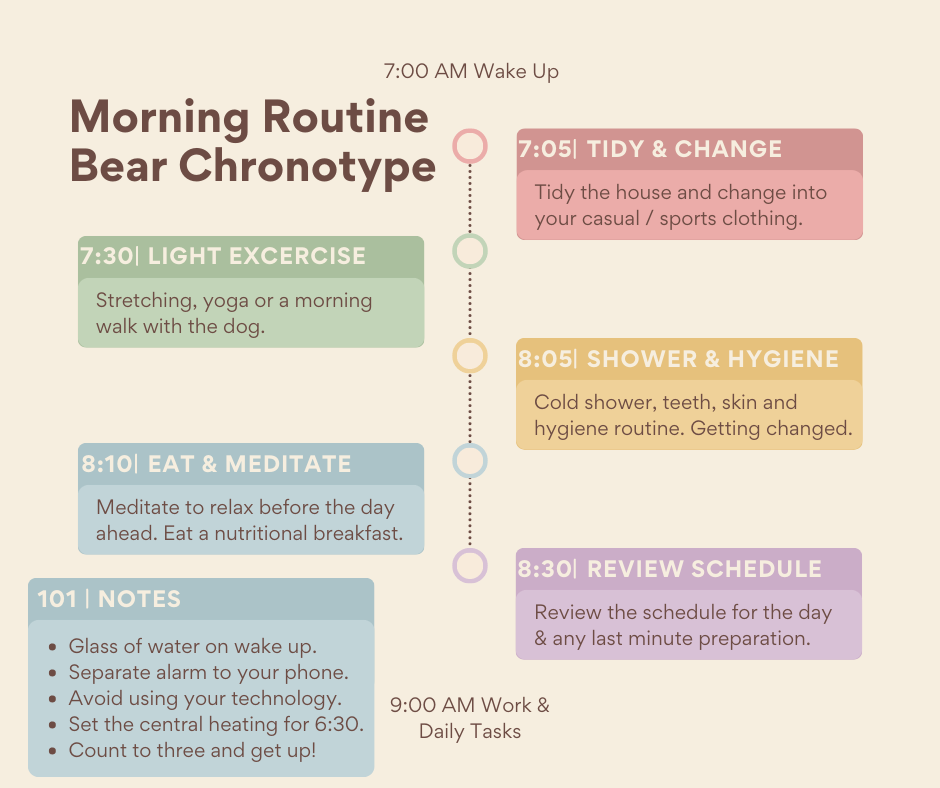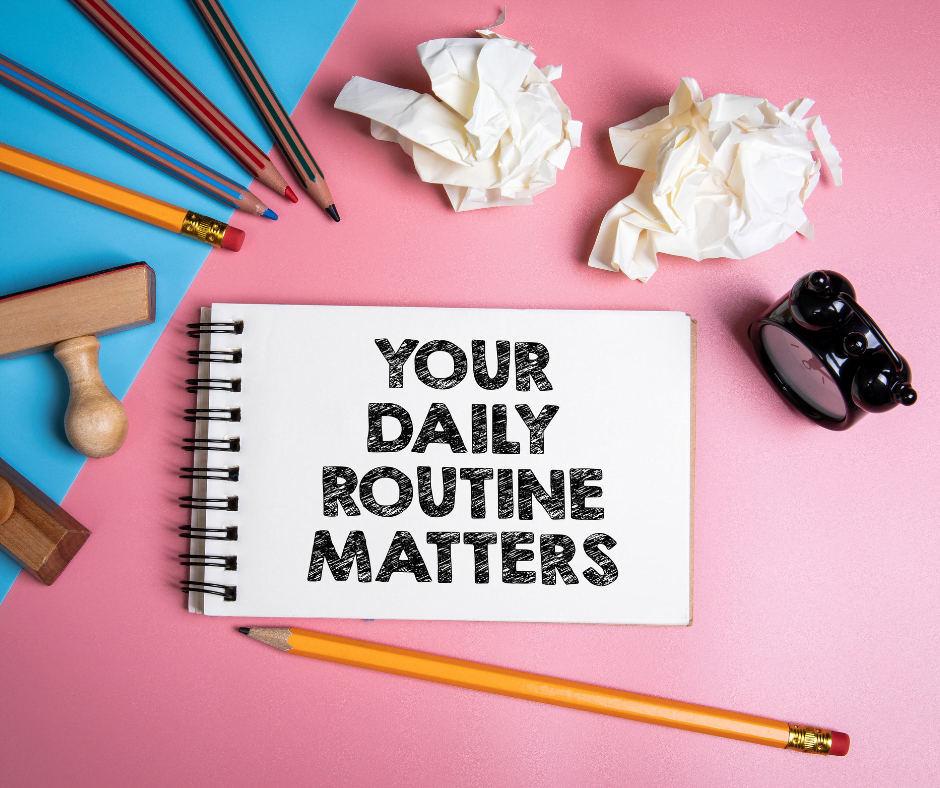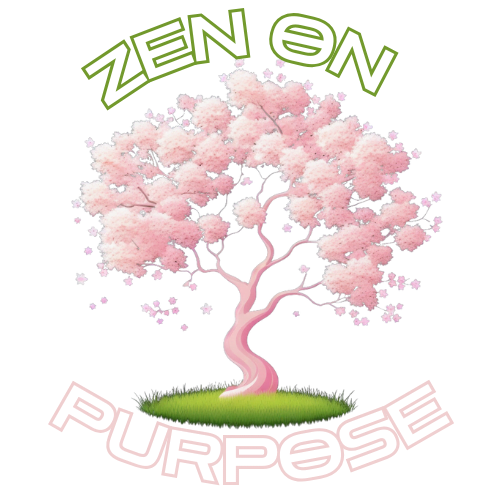Today I am going to focus on implementing the perfect morning routine. This is essential for anyone looking to reap the rewards that come with an early start. After my first article centred around focus, the next natural step was implementing a morning routine. This morning routine would allow me to use the most productive hours of the day to their fullest.
What is a Morning Routine?
A morning routine is the development of a schedule designed specifically for you. The daily morning routine seeks to ensure that you give your body the very best start to your day. By including various activities that get you up and active, you can kick-start your brain rather than roll out of bed feeling sluggish and pessimistic about the day ahead.

Why is a Morning Routine Important?
Let’s face it when you have just woken up; you are not firing on all cylinders, that is for sure. After researching this, it turns out there is an explanation for this. Your reaction times are 360% lower, your ability to process information is 70% lower, and your ability to make good decisions is almost halved at 51%. It is essential to consider this when you are about to undertake that vital task as soon as you wake up.

According to Dr. Stuart Farrimond in The Science of Living, the first hour awake is crucial for the rest of your day. The science is sound when implementing some of the below activities into your morning routine.
Morning Routine Ideas
1. Get Out into the Daylight
Unfortunately, in the UK winter, you are hard-pressed to find sunlight in the morning. However, I work for myself currently, so I may implement a short morning walk to get outside before I start my most productive hours. Not only does this reduce anxiety, but it also provides the sunlight our body craves during the winter months. By gaining this exposure to the outdoors and that early morning sunlight, we can combat the adverse effects of Seasonal Effective Disorder (SAD). This allows us to live in the present, even in the colder months of the year, which might not seem as pleasant at first glance. When we slow down, we can see the beauty in every moment.
2. Stretching, Yoga, Gentle Exercise
In the Science of Living, one of the solutions to feeling groggy in the morning is to start the day off with light exercise. I recently received a Fit Bit for my birthday, which will significantly motivate me toward my fitness goals. I have always struggled with mornings, so I look forward to trialing this method moving forward.
3. Don’t Make Big Decisions
With your ability to make important decisions halved upon waking up, we can see why this is such an important lesson. I have always been the person to jump straight into work upon rising. This is especially the case during this past year working for myself and working from home for clients. We can all draw from this method and give ourselves a break in the morning. Time to slow down. Time to reflect.
4. A slower start
Waking up alarm free is best, but unfortunately, most people must start their day at a particular time. If you choose an alarm, avoid the snooze at all costs. Snoozing for less than 45 minutes will make you feel more sluggish, as your body will not have time to sink back into a refreshing sleep. The multiple alarms will also lead to several surges of adrenaline to kick-start your day rather than one. The sharp noise of an alarm clock triggers our fight-or-flight response. According to Stuart Farrimond, these multiple adrenaline surges can impact our physical and mental health over time.
There are several methods that we can all implement into our life to start slower:
- Avoid Snoozing.
- Open the curtains to allow fresh sunlight into the room in the morning.
- Set a timer on your bedroom light.
- Set your central heating for half an hour before you wake up (I struggle to get out of bed when it is freezing in the morning).
5. Stop the early morning coffee.
This one shocked me. Apparently, I have been drinking coffee wrong all these years, as my usual morning routine tends to always start with my coffee cup in hand. According to Dr. Stuart Farrimond, the most optimal time to drink your first caffeinated drink is two to four hours after waking. I hope to implement this one, as I have too much caffeine (as I am sure we all do).
From the sources I have read on this matter, the best thing you can do for your body upon waking is to drink a glass of water.
Just water.
I might want to purchase a new water bottle…
6. Work with your body clock.
It turns out we all do have a body clock. Instead of the name “body clock,” we owe this to our Suprachiasmatic Nucleus (SCN), which controls the release of hormones once daylight-sensing cells in the eyes signal it to do so. This means that you will come alive at different points in the day depending on your chronotype (your body clock timetable). This means if you are a “Night Owl,” you come alive during the early evening hours, and if you are a “Morning Lark,” you come alive as soon as the sun comes up.
Work with your body clock, not against it.
Change your lifestyle to align with your chronotype. I found it very helpful to find out my chronotype with this online questionnaire.
According to the quiz, I am a Bear or Hummingbird, meaning I am most active and alert during the late morning and early afternoon. Dr. Michael Breus suggests the following for Bears:
- Cortisol and Caffeine Connection for Bears: Drink a caffeinated drink between 9:30 and 11:30. Then drink another between 13:30 and 15:30. Caffeine should be avoided outside these windows (if you choose to drink caffeine). While writing this, I am currently drinking caffeine outside these windows. Oops.
- Exercise for Bears:
- Fat Burn: Work out fasted thirty minutes after waking up.
- Performance: Work out in the afternoon for the best performance as a Bear.
- Alcohol for Bears: If you choose to drink alcohol as a Bear, he suggests you drink in your “Happy Hour Window.” For Bears, this is between 18:30 and 20:30. He also indicates that to kick any hangover you:
- Drink a glass of water for each beverage.
- Drink coconut water before bed.
- Stop drinking three hours before bed.
- Take a supplement or eat foods rich in Magnesium and Vitamin B in the morning.
- Time – if it is particularly bad.
- Bedtime for Bears: he recommends that you go to sleep at 11:10 pm and wake up at 7:00 am. It seems strange to me as I will get less sleep, but he suggests you test it out for 90 days. I will update you on the results. If it works, I will buy his book “The Power of When” and test other methods he suggests.
7. Take a cold shower
So, this one will take some getting used to. I love a hot shower and have two a day. I know that is a lot of showering for one guy, but what can I say I love them. So, when I heard that I should implement cold showers into my daily routine, this was a “shock to the system,” to say the least.
Fortunately, to gain the benefits of cold showers, you only need to expose your body to 30 seconds of shock to achieve the spring clean that goes on inside your body. Cold showers reduce inflammation, muscle soreness, and fatigue, improve circulation, and reduce stress levels.
Dr. Stuart Farrimond recommends implementing 30 seconds of cold water during your morning shower. This means I can get the added benefits while still being able to have a “mostly hot” shower. Who knows, one day, I may only take cold showers – baby steps.
8. Eat a nutritious breakfast.
Even though we can go without breakfast, The Science of Living suggests that we:
- Include sources of fiber in your breakfast to keep everything moving.
- Eat slow-releasing carbohydrates to ensure that you remain fuller for longer and ensure that your energy levels remain high throughout the early morning.
- Avoid refined starches, as these will increase levels of Ghrelin (the appetite hormone) quicker than non-refined carbohydrates. Put down the sugary cereal and make your own Muesli with more of the natural goodness of whole oats and dried fruits.
9. Brush those pearly whites
Of course, any good morning routine includes the twice-a-day toothbrush. The Science of Living recommends that you opt for the following:
- A fluoride toothpaste.
- Brush twice a day.
- Avoid mouthwash for 30 minutes after you have brushed your teeth.
- Listen to music (apparently, the standard length of a pop song is how long you should brush your teeth – handy if you ask me).
- Use a small brush head.
- Use a plaque-disclosing tablet.
10. Practice Meditation
Even the regular practice of deep breathing in the morning can contribute to a happier, healthier you. According to the University of Michigan Health, deep full breathing and meditation provide many benefits, including reduced tension, increased feelings of relaxation, anxiety, and stress reduction.
I will start using the wellness practices on my Fitbit for my morning routine. In the future, I may explore paid options, including Headspace. Still, for now, the meditation exercises on my Fitbit and Smiling Mind should provide enough content to get sucked into during my morning meditation. I will document these sessions on Zen on Purpose to track my progress and what benefits I have gained from the morning meditation sessions.
11. Avoid Using Your Phone
As mentioned above, we are all vulnerable in the morning. With our ability to make good decisions halved, we are in no position to read, digest information, and write posts that we may regret later. If you have a habit of going for your phone (I do), Dr. Stuart Farrimond recommends that we ensure that apps are restricted in the morning to only those that provide positive content that does not bombard the senses. Even better, don’t reach for your phone at all.
For me, this is difficult; I use my phone as my morning alarm (I am sure many of us fall fowl to this issue). I will purchase a separate alarm clock with a lighting timer to combat this. I will write about the product that I eventually choose.
I will also implement a screen time well-being app on my phone. I will also write about this in another post.
12. Review Your Schedule
Reviewing what the day ahead may look like at the end of your morning routine is always essential. I say may, as we don’t know what life will throw at us during the day, but it is best not to worry about things out of our control and focus on those steps in the process we can control.
My New Morning Routine

Wake Up: 7:00 am, aligned with the Bear Chronotype, after going to bed at 23:10 every night.
- Upon waking, I will drink a glass of water that I will have left out on my bedside table (no coffee until after 9:30 ouch).
- I will also only use my phone at 9:00 am. I will ensure that I do not snooze and wake up when my new alarm goes off at 7:00 am (this will eventually be a different alarm from my phone).
- I will keep my curtains open at night in the summer (not much point in winter – it will be pitch black at 7:00 am).
- I will set my central heating to come on at 6:30 am.
Getting Ready & Tidy: 7:05 to 7:30 am. This includes making the bed, cleaning the house, and changing into warm walking clothes.
Stretching / Yoga: 7:30 am before the light exercise and the outdoors from walking my dog in the park.
Dog Walk: 7:45 to 8:05 to provide the benefits of getting outdoors and providing 20 minutes of light exercise to kick the morning off.
Cold Shower: 8:05 – 8:10 to gain the added benefits of that early morning cold shock. I will do this for 30 seconds of my overall shower and see how it goes. I will follow this up by brushing my pearly whites with fluoride toothpaste (with my new electric toothbrush) and getting changed for the day.
Meditation: 8:10 – 8:20 I will practice my daily meditation through Fitbit and Smiling Mind.
Nutritional Breakfast: 8:20 – 8:30 I will eat a healthy breakfast high in macro and micronutrients to kick off the day.
Review Schedule and Priorities: 8:30 to 9:00. This time will be spent reviewing the daily schedule and tinkering with any priorities to make the most out of the day. Doing this before 9:00 am is crucial as my most productive hours are during the late morning and early afternoon as a Bear / Hummingbird.
Final Thoughts
So, there you have it.
My new morning routine and where my finding has come from to make the most out of your morning. Hopefully, you were able to gain something from this article that you can implement into your own morning routine.
If you have any suggestions for morning routines, please share them below. I will be sure to share updates and reflect on my morning routine in the future. If this turns into a morning “habit,” the benefits will be sure to show sooner rather than later.
References
Breus, M. (2022) Chronotype quiz, The Sleep Doctor. Available at: https://thesleepdoctor.com/sleep-quizzes/chronotype-quiz/ (Accessed: January 16, 2023).
Farrimond, S. (2020) The Science of Living. Penguin Random House.
Stress management: Breathing exercises (2022) Stress Management: Breathing Exercises | Frankel Cardiovascular Center | Michigan Medicine. Frankel Cardiovascular Center University of Michigan. Available at: https://www.umcvc.org/health-library/ug1812#:~:text=Roll%20breathing%20(also%20called%20abdominal%20breathing)&text=Place%20your%20left%20hand%20on,your%20right%20hand%20remains%20still. (Accessed: January 16, 2023).
Watson, K. (2017) Cold shower benefits for your health, Healthline. Healthline Media. Available at: https://www.healthline.com/health/cold-shower-benefits#endorphins (Accessed: January 16, 2023).

